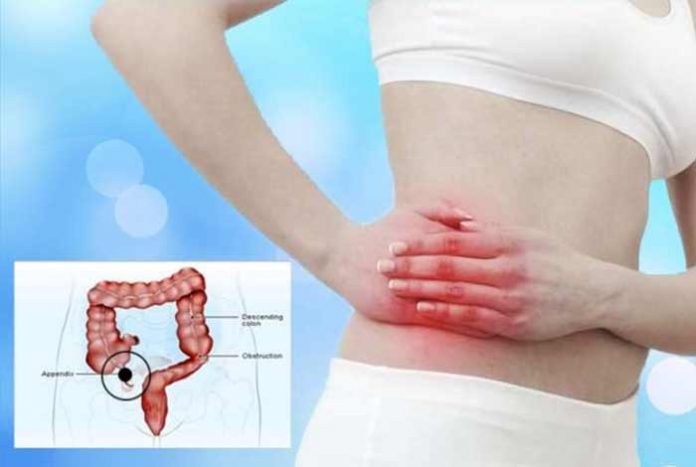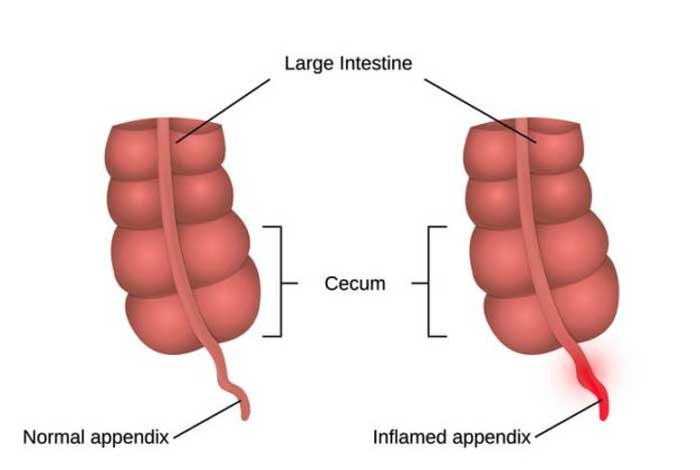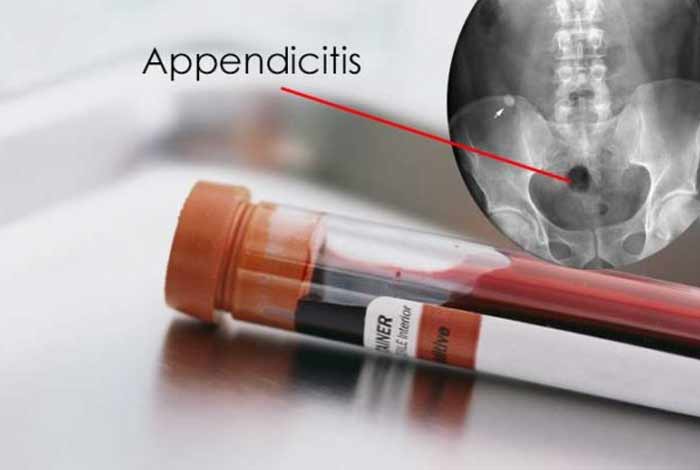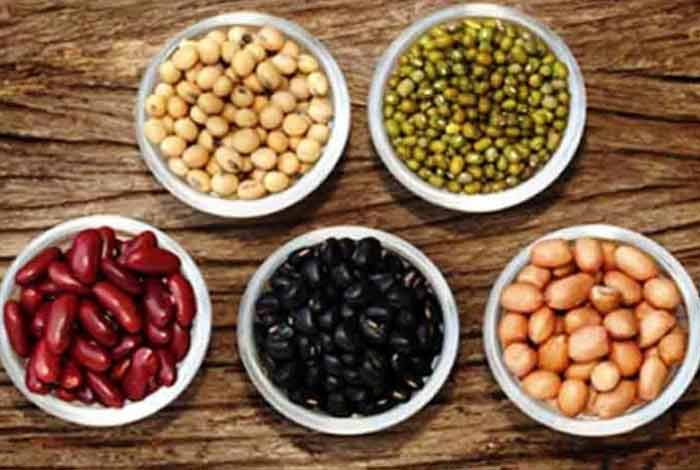
Appendicitis is a condition arising due to appendix inflammation. Appendix is a narrow, blind-ended tube connected to the cecum – a pouch-like structure attached to the point, where large and small intestines meet. Appendicitis occurs due to the blockage of its opening (mostly by stool), foreign material, or cancer. Infection can also be a cause of this blockage.
Appendicitis is regarded as a medical emergency since an immediate surgery is required to remove the appendix after its diagnosis. If left untreated, appendix may perforate or burst; allowing infectious material to spread in the abdominal cavity. This may further result in peritonitis – severe inflammation of peritoneum, the lining of the abdominal cavity, which if not instantly addressed, could be fatal.
People, aged between 10-30, are more prone to develop this condition. In the U.S., it is the most common reason for abdominal pain, which requires a surgical procedure. In comparison to females, this condition is more common in males.
Appendicitis is the most common cause of abdominal pain in the U.S. Statistics suggest, more than 5% of people in the U.S. suffer from appendicitis at some or other point of time in their life. Though appendicitis may occur at any age, it is most common among teens and people in their twenties.
Types and Symptoms of Appendicitis:
1. Types of Appendicitis:
Appendicitis is broadly classified into four types on the basis of symptoms:
- Acute Appendicitis: It is the commonest of all surgical conditions of abdomen. It may occur at any stage of life, but most commonly found in teens and people in their 20s.
- Sub-Acute Appendicitis: In this type, several symptoms of acute appendicitis automatically go away before reaching the acute phase. However, the symptoms may occur time and again.
- Recurrent Appendicitis: In some cases, if appendicitis hasn’t attained its final stage, it may cause recurring attacks of pain that are milder in nature. In this type, a patient may remain free of symptoms and may be misdiagnosed to be normal.
- Chronic Appendicitis: In this type of appendicitis, pathological tests might reveal scarring and thickening of appendix – symptoms that indicate an old, but healed inflammation of the same. Continuous pain in the lower right side of the abdomen is a common symptom of chronic appendicitis.
2. Symptoms of Appendicitis:
Primary symptoms of appendicitis are nausea and lack of appetite. Abdominal pain appears at the later stage with further progression of appendicitis. Even there could be stages of intense and severe pain that increases with time. At the beginning, the pain is not localized to any specific point. Later, it tends to appear in a circular manner, but still difficult to pinpoint the exact location. With the passage of time, the pain begins to concentrate on the right lower abdomen. The primary symptom of nausea may become more serious to vomiting with lack of appetite. In this condition, inflammation results due to intestinal obstruction which leads to abdominal pain. Some common symptoms of appendicitis include:
- Lack of appetite
- Nausea and vomiting, followed by abdominal pain
- Dull to mild pain at the naval part of the abdomen, which becomes severe with time and starts to localize at the right abdominal region
- Inability to pass gas
- Abdominal swelling, sometimes
Other severe symptoms of this condition are difficulty in passing urine, constipation, severe gas problem, cramps and aches, and sometimes, diarrhea.

Risk Factors of Appendicitis:
Some other health conditions, such as constipation and cystic fibrosis increases the risk of appendicitis. Moreover, having a family history can also elevate the risk of this condition. Although people belonging to the age 10-30 years are more likely to experience this condition, aged people may also suffer from appendicitis.
Do I have Appendicitis?
If you are experiencing symptoms of appendicitis, such as loss of appetite, nausea and persisting abdominal pain, then you might be suffering from appendicitis. To clear your doubts, you must consult an expert to diagnose the condition and stage of the same.
Right abdominal pain can also be a sign of liver infection or gall-bladder stone. Lack of appetite and nausea also occur in these conditions. So, just experiencing right abdominal pain is not enough to conclude that the condition is appendicitis.
A physician may begin by physically examine you. Thereafter, he might suggest you some clinical tests to confirm the condition.
Causes and Prevention of Appendicitis
1. Causes of Appendicitis:
Appendicitis is mainly caused by the blockage of appendix. This blockage may be caused by the development of a thick layer of mucus inside the appendix or the fecal material that goes into the appendix. The thick mucus or stool hardens to become a rock-like material, called fecalith, which obstructs the appendix opening.
The opening can also be blocked by the swelling of lymphatic tissues of the appendix. Once the opening is blocked, bacteria, already residing in the appendix, begins to infect the walls of the appendix. If the symptoms remain unnoticed, appendix may rupture, causing bacteria to spread outside the same.
A ruptured appendix may spread the infection all across the abdomen, but it usually, it remains concentrated in a small region surrounding the appendix by some tissues that form peri-appendiceal abscess.

2. Prevention of Appendicitis:
Consuming a fiber-rich diet is the only way to prevent appendix. Read below to know what all you can include in your daily diet:
- Add cereals, wheat germ, oat bran, salads and yogurt in the breakfast
- Use whole-wheat flour while cooking or baking
- Brown rice is more beneficial than normal rice
- kidney beans could help add more fiber to the diet
- Fresh fruits are also beneficial
Diagnosis and Tests of Appendicitis:
There are several ways to diagnose appendicitis. A mere abdominal pain cannot confirm its existence. Clinical examination techniques like white blood cell (WBC) count, urine analysis, abdominal X-ray, ultrasound, CT-scan are employed for appropriate diagnosis of this condition.
Usually, WBC count increases with infection. Nevertheless, increased white blood count can be associated with other diseases as well. While WBC count doesn’t confirm the presence of appendicitis, it for sure indicates some internal infection.
Similarly, urine analysis solely doesn’t confirm the existence of appendicitis, since it also indicates kidney infection, renal stone and urine infection.
Abdominal X-ray analysis can easily identify the fecalith, which is the underlying cause of appendicitis.

Treatment and Care of Appendicitis:
The common treatment for appendicitis is surgery. It’s rare that appendicitis is cured without surgery. The intensity of surgery depends on the condition of the infection. The surgery to remove appendix is called, appendectomy. It can be either laparoscopic or an open surgery. Laparoscopy or microsurgery is the less minimally invasive form of surgery with short recovery time. Whereas, an open surgery is generally associated with other complications, and requires long recovery time.
Sometimes, pregnant women suffer from appendicitis. While the treatment is same, the process is quite delicate. In pregnant patients, open surgery is little risky, but microsurgery is as normal as for others. Surgeons also remain cautious while choosing medicines for them. Delayed diagnosis of appendicitis in pregnancy is risky to the extent of fatality.
OTC Medication and Self-Management Methods for Appendicitis:
In most cases of appendicitis, experts recommend the complete removal of appendix by surgical means. That is why there no over-the-counter drug to treat this condition. Nevertheless, OTC medicines may be used to reduce associated symptoms like abdominal pain and mild fever. Still, if the fever is high or the pain is severe, it is always recommended to consult a doctor before taking any medication.

Self-Management Methods for Appendicitis:
One must be cautious with the symptoms. If you are suffering recurring episodes of pain in lower right abdomen, you must consult a doctor without delay.
Diet is important to regulate the digestive system and to prevent appendicitis due to constipation. Fiber-rich food along with plenty of water help flush out the waste easily from the body and supports bowel movement.
Natural Ways to Treat Appendix:
Some easily available spices and herbs help prevent or reduce the symptoms of appendicitis. These are listed below:
- Castor Oil: It helps reduce inflammation by clearing the blockage. It is also beneficial for constipation and bowel movement problems.
- Garlic: It is anti-inflammatory in nature and helps reduce pain.
- Ginger: Besides being anti-inflammatory, it is beneficial in condition like vomiting and nausea.
- Fenugreek Seeds: These seeds prevent the accumulation of excess mucus and waste in the intestine. It also helps reduce appendicitis pain.
- Lemon: Citrus juice is beneficial for pain relief as well as prevents constipation and indigestion. Vitamin C in lemon helps boost immunity and prevents the body from infections.
- Basil: Basil improves digestion and beneficial in lowering the body temperature of appendix patient.
- Mint: It is another home remedy that helps reduce intestinal gas, vomiting and nausea. It also reduces abdominal pain.
- Ginseng: It effectively reduces the pain and inflammation caused by appendicitis.
- Fiber: Fiber-rich foods such as beetroots, tomatoes, cucumber, broccoli, brown rice, peas, pumpkin seeds and wheat germs reduce constipation and, so help lowering inflammation.
- Turmeric: This is an anti-inflammatory spice, which is known to reduce appendix inflammation.
- Yogurt: Rich in protein and calcium, yogurt is a probiotic, which is helpful in the condition of appendicitis.
- Water Intake: Water helps to flush out toxins from the body as well as prevents constipation. Fresh fruits and vegetable juice are also considered good for appendix patients.
Besides, pain can be effectively managed in appendicitis and after surgery through natural ways:
1. Meditation: It is an effective way to overcome pain related to appendicitis and post-operative conditions. A study found that meditation and jaw relaxation techniques are more effective than physical methods for pain management.
2. Acupuncture: Acupuncture is known to be beneficial in reducing gas pains associated with appendicitis. Moreover, electroacupuncture is said to be helpful in lowering pain after laparoscopic surgery for appendicitis.
Health Tip by Expert:
Children, pregnant women and elder people may have mild pain due to appendicitis. It is also possible that one may have appendicitis without experiencing all related symptoms. Thus, experts recommend on-time treatment to avoid further complications. This also lowers other risks associated with appendicitis.










